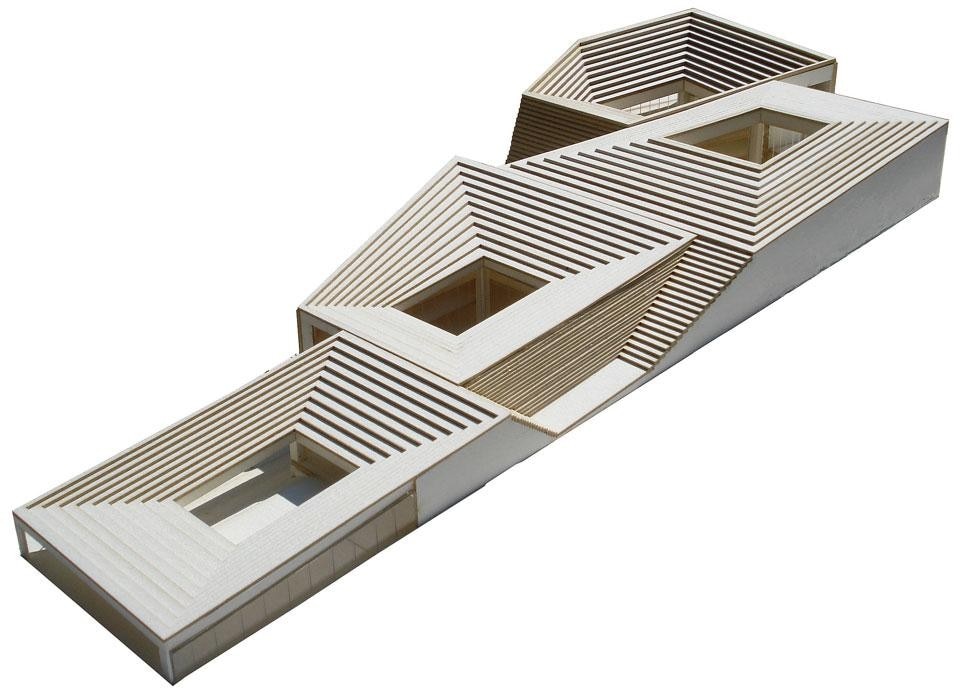This evaluation must have contrasted with what jury members undoubtedly saw on their visit to Jerusalem — the muscular architecture of domination and segregation that defines Israeli control of the area, and the "Herodian" fantasies that tend to possess contemporary architects when given the chance to build in this city. The latter problem was augmented not only by the library's aspiration to become "the National Library of the Jewish People" no less, but also by the historical role that the funders — Yad Hanadiv (formerly the Palestine Jewish Colonisation Association), the philanthropic arm of the Rothschild family — had played in the making of the modern state of Israel. Since the end of the 19th century, Rothschild's banking fortune has supported agricultural settlements and, later, the country's most important public institutions, the Israeli Knesset and the Supreme Court, both adjacent to the site allocated by the state to the National Library.
For the dismissal of the winning architect, the organisers and funders provided only a vague and legalistic reason. Segal was ousted because he was "unable to create conditions which would enable concluding an agreement with him". Pardon me?
But the plot had already thickened and muddied. A few weeks after Segal's winning design had been announced, a group within the Jerusalem Municipality sent letters to the Prime Minister's office, the Minister of Culture and the press insisting on Segal's immediate removal from the project. Their reasoning cited "A Civilian Occupation: the Politics of Israeli Architecture" — a research exhibition and publication that Segal and I co-edited in 2002, analysing Israeli settlement politics and the role of Israeli architects in it. The exhibition and the book were censored by the Israel Association of United Architects (IAUA), but in 2003 it was shown in New York City and Berlin, and the book was republished in the UK and US. The Jerusalem Municipality's representative in the District Planning Committee threatened to block the project by choking it in municipal bureaucracy until the "National Library [chooses a new architect] from among the Zionist architects living in Israel".
The National Library representatives denied that this was the reason for Segal's dismissal, but they also failed to back him against the attack, feeding speculation that the motive for dropping Segal was indeed political. After the ousting the organisers let the official explanation be known — one of Segal's former colleagues at the Harvard Graduate School of Design, Bing Wang, a Boston-based planner whose studio was on the project team, had challenged the architects' full intellectual ownership of the winning design. Most architects, versed in the economy of competition production, understand that team members are a natural and integral part of architectural production, and to them the reason given by the organisers seemed to be derived from bureaucrats' misunderstanding of the architectural process. One may also assume that the organisers could have easily reached a solution had they wished to do so. In a strange twist, it was the IAUA that firmly stood by the person they had formerly boycotted.
Following the ousting, Segal appealed to the Jerusalem District Court requesting to be reinstated as the winner. With the legal process delayed, the project organisers rushed to create facts on the ground by launching a new call for selecting another architect, this time from within the most established firms in Israel and internationally.
With all its deficiencies, an anonymous and open competition is the best mechanism to foster and protect architectural excellence from the corrupting relationship between politics and finance. But when entering a competition, one is limited to answering questions posed by the organisers, and it is these that need urgent questioning. By what right does the state seek to construct a building that purports to represent and claim custodianship of Jewish people's cultural heritage — much of it written by the very people opposing Jewish nationalism or the nationalist politics of present-day Israel. Shouldn't a state project be by and for its citizens and subjects? Should it not include and serve the Palestinians in Israel and those Palestinians incarcerated only a few kilometres away and barred by the wall from accessing the building? Furthermore, in its storage, the National Library of Israel already holds thousands of looted books that belonged to Palestinians expelled from their homes in the Nakba of 1948. Today it might be fitting for these books to be considered as part of Israel's heritage, too.
When the established architecture firms, now the only ones eligible to participate, sit down to consider whether to respond to the second call of the National Library of Israel, they should bear in mind another Rothschild — Rothschild Boulevard — the central street in Tel Aviv named after the benefactor who used his banking wealth in the 1880s to establish outposts in Palestine. This boulevard was the place in which the 2011 social justice protest erupted from within an improvised tent city that called itself "Rothschild, corner of Tahrir". That protest demanded an end to the 20th century's hubris of bankers. As far as colonial philanthropy is concerned, the 19th century must also finally come to an end. Eyal Weizman


